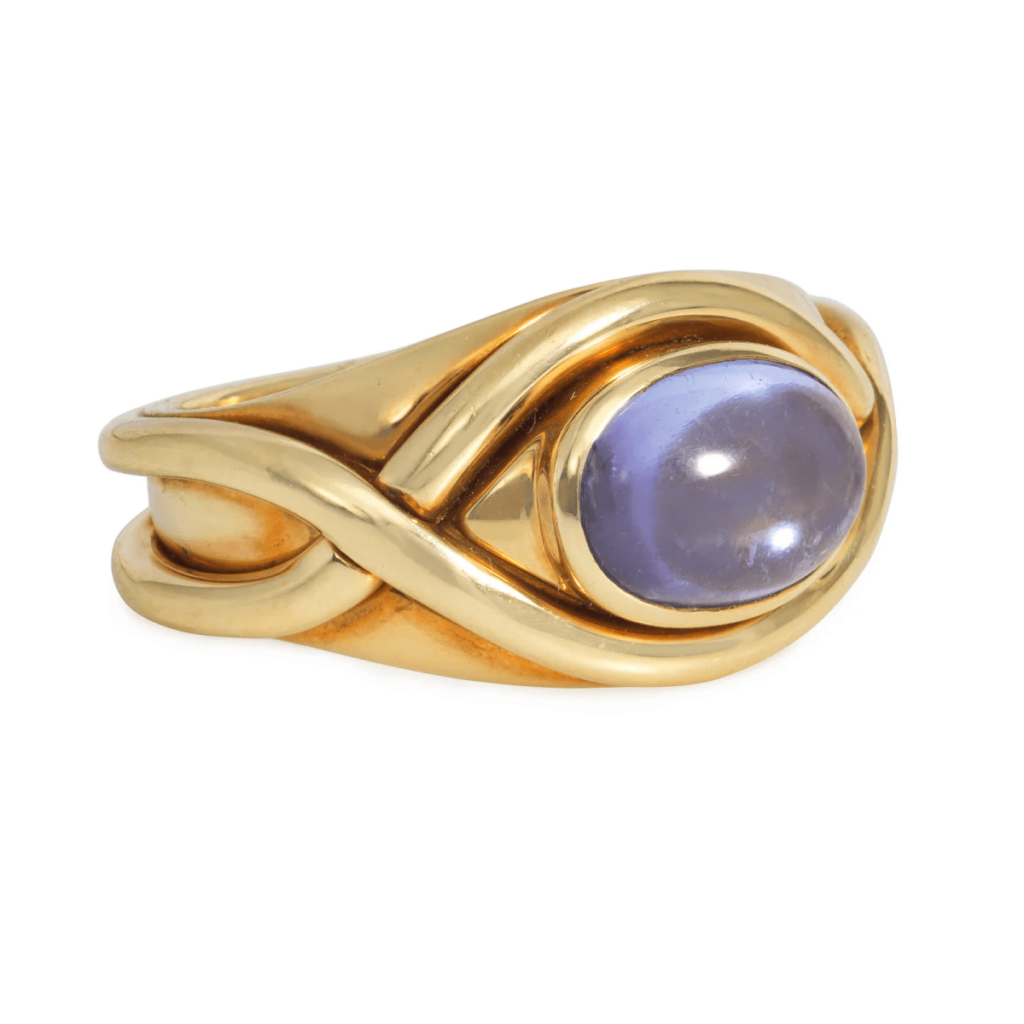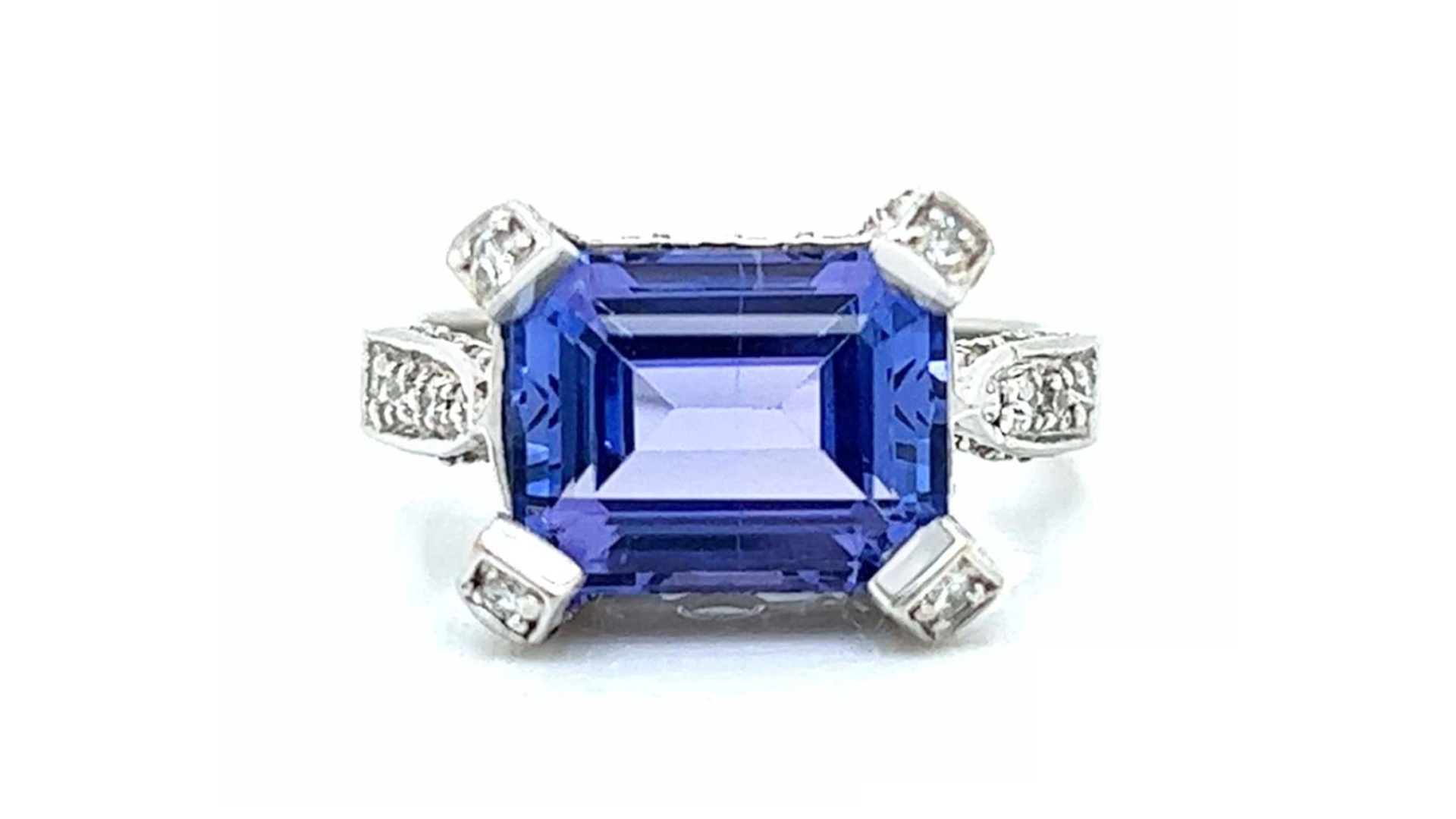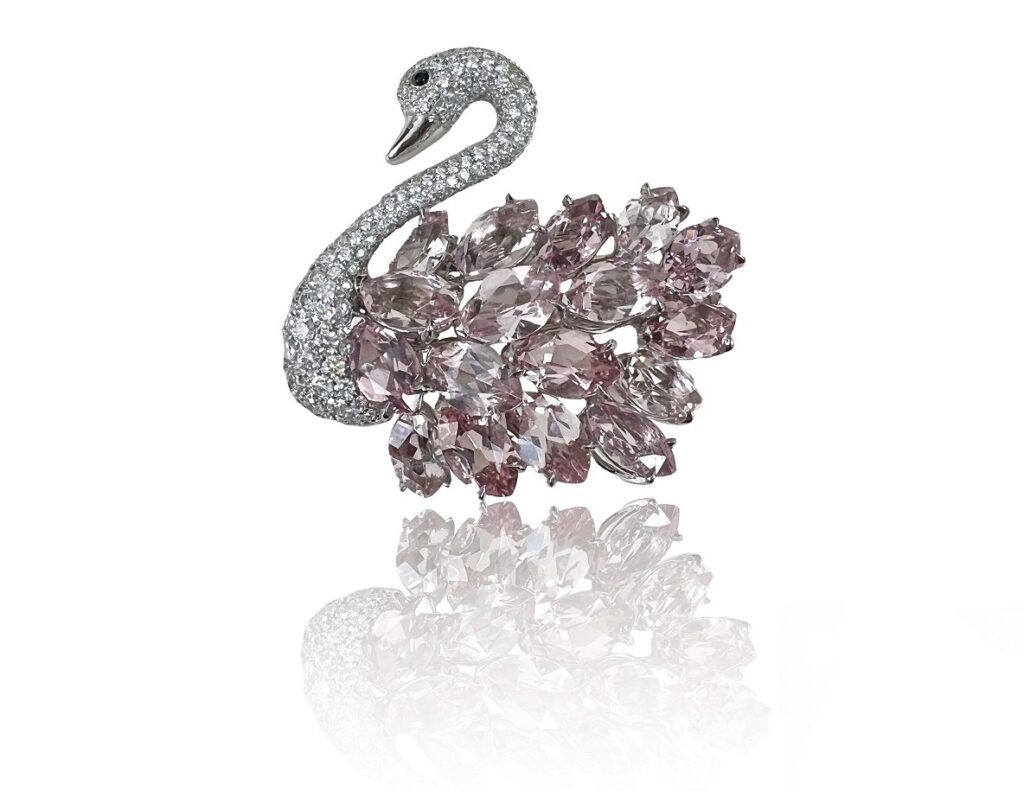Best known for its dazzling diamonds, Tiffany & Co. introduced four colored gemstones to the world during the 20th century. Hailing from all corners of the globe, these four gems have become beloved additions to the colored stone lexicon, offering designers new stones to add to their palette and offering consumers new choices of color and luxury. Let’s take a look at these lovely gems and the stories of how they got to Tiffany & Co.
Kunzite
Kunzite was first discovered in San Diego, California in 1902. Miners thought the stone was a mineral known as spodumene, but its lilac-pink color threw them off as it hadn’t been seen in that hue before. The stone was sent to Tiffany & Co. gemologist Frederick George Kunz, who confirmed that the frothy pink stone was indeed spodumene, but the color made it a “new” gemstone. Kunzite gets its color from traces of the element manganese when the stone is forming and tends to be large with few inclusions. It’s a gemstone that can be a little temperamental, if it is exposed to heat or bright light, the color may fade. In 1903, Charles Baskerville, a chemistry professor at the University of North Carolina and City College of New York, named the stone Kunzite in honor of George Kunz.
Morganite
While visiting Madagascar in 1910, Kunz discovered a rose colored beryl, which turned out to be the first morganite. The gem is an orange to pink variety of beryl – the same mineral family as emerald and aquamarine. Morganite, like kunzite, gets its color from traces of the element manganese. This gem is loved for its soft pastel color that tends to be peachy. Today, most morganite comes from Brazil, but may also be found, although sporadically, in Afghanistan, Mozambique, Namibia and the United States. The gemstone was named in honor of financier JP Morgan, who was a collector. He also made major contributions to the American Museum of Natural History and the Museum of Natural History in Paris.
Tanzanite

Tanzanite is found in only one place in the world — in the Merelani Hills at the foot of Mt. Kilimanjaro in Tanzania. Prospector Manuel de Souza discovered this new variety of blue-violet zoisite in 1967. He showed it to Tiffany & Co. vice-president Henry B. Platt who just happened to be the great-great-great grandson of the firm’s founder Charles Lewis Tiffany. Platt named it Tanzanite after Tanzania where it was discovered. Tanzanite has pleochroism, which means that the crystal shows different colors when viewed in different directions. It tends to look more blue in fluorescent light and more violet in incandescent light, a balance of the two colors is considered most desirable. In 1968, Platt asked Tiffany & Co. designer Donald Claflin to create a collection using tanzanite, which became the store’s second most popular gem after diamonds.
Tsavorite Garnet
Tsavorite is a rare type of green garnet, which needs very specific rock chemistry and special rock conditions to grow. It gets its green color from traces of the elements vanadium and sometimes chromium. Tsavorite tends to be found in smaller sizes. Stones over 2-carats are rare, and gems over 3-carats are considered super rare. The gem was first discovered in 1967 by Scottish geologist Campbell R. Bridges near the border of Tanzania and Kenya. Bridges couldn’t get mining rights in Tanzania, so he traced the mineral deposit to Kenya, where he was able to mine. Small quantities of tsavorite can also be found in Madagascar and Pakistan. The gemstone was shown to Platt who, in 1974, named it tsavorite after the Tsavo River and Tsavo National Park where it was found.
Although kunzite, morganite, tanzanite and tsavorite were all brought to the world at large by Tiffany & Co., these delightful colored gemstones are used by designers all around the globe to create jewelry meant to be worn and admired.
Top of Page: Tanzanite, diamond and 18-karat white gold ring, courtesy Jewelry World (@jewelryworldofficial).
Authored by Amber Michelle



